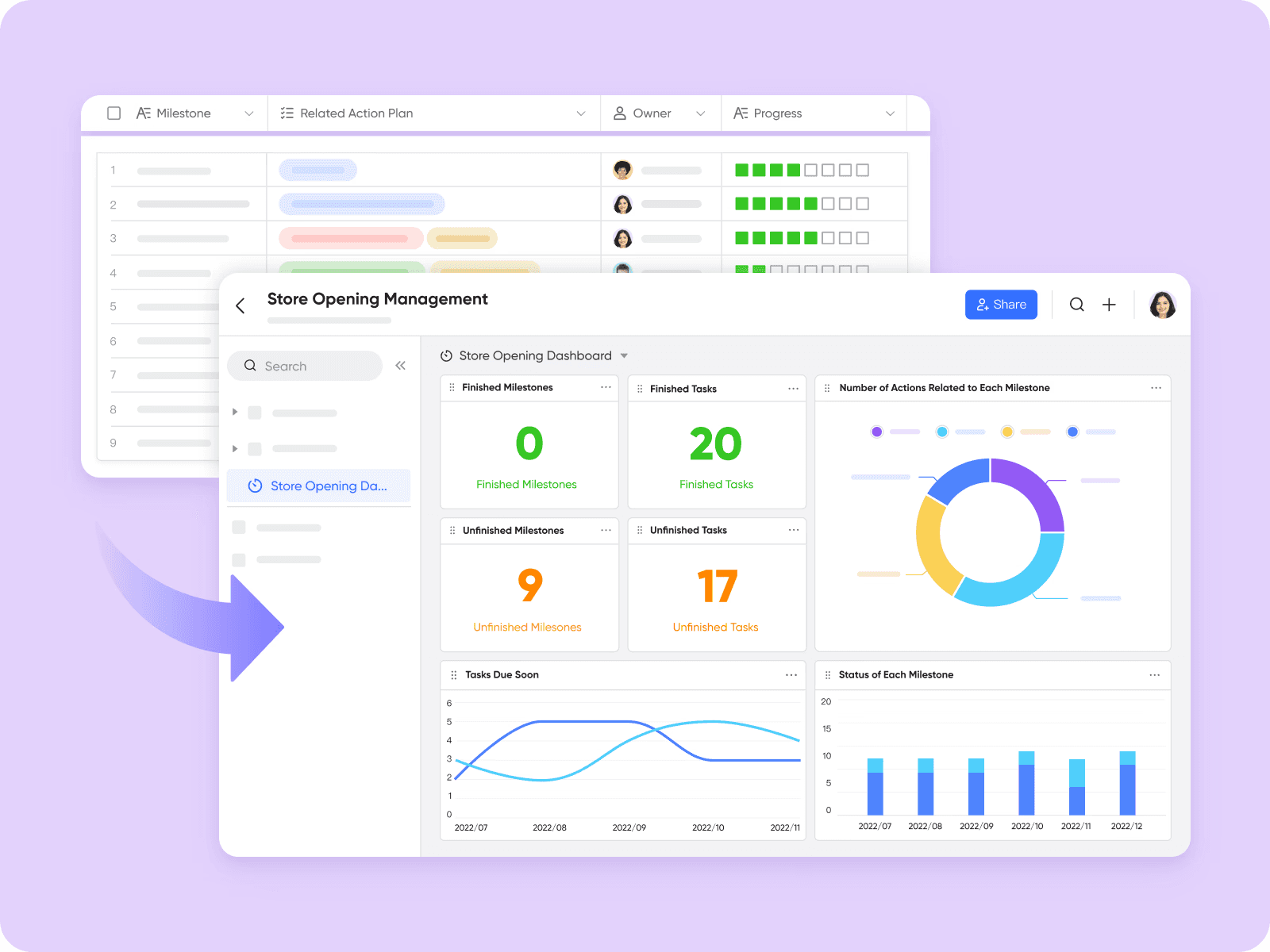In the bustling world of the restaurant industry, effective inventory management is the backbone of success. It can be the difference between a thriving establishment and one that struggles to stay afloat. Proper inventory management is not merely about keeping track of what’s on the shelves; it encompasses a comprehensive approach to ensuring that every item is accounted for, efficiently utilized, and strategically replenished.
However, many restaurant owners find themselves overwhelmed by the challenges of inventory management. From monitoring stock levels to managing supplier relationships, the intricacies of inventory can become daunting. In this article, I will guide you through how to optimize your restaurant inventory management system, ensuring that your operations run smoothly, costs are controlled, and waste is minimized. Let’s dive into the essential components that make up an effective restaurant inventory management system.
Understanding restaurant inventory management systems
At its core, a restaurant inventory management system is a set of processes and tools designed to track inventory levels, orders, sales, and deliveries. It serves as the foundation for maintaining adequate stock levels and ensuring that your restaurant can meet customer demands without overspending or running out of essential items.
A robust inventory management system should include the following key components:
Real-time tracking: Being able to monitor inventory levels in real-time allows you to react quickly to changes in demand or supply. This can prevent stockouts and overstock situations, which can be costly.
Data analytics: Analyzing inventory data helps you identify trends, such as which items are selling well and which are not. This insight can inform purchasing decisions and menu adjustments.
Supplier management: Effectively managing supplier relationships and tracking deliveries ensures that you have the right products available at the right time, maintaining the quality of your offerings.
Cost control: Keeping a close eye on inventory costs can help you maximize profitability by identifying areas where you can reduce spending without compromising quality.
By understanding these fundamentals, you can lay the groundwork for a successful restaurant inventory management system.
The challenges of traditional inventory management
Despite the importance of effective inventory management, many restaurants still rely on traditional methods, such as spreadsheets or manual tracking. While these methods can seem straightforward, they often present various challenges:
Inaccuracy: Manual tracking is prone to human error, leading to discrepancies in inventory levels. This can result in stockouts or overorders, both of which affect profitability.
Time-consuming: Physically checking inventory and updating records takes valuable time away from staff, who could be focusing on customer service or food preparation.
Difficulty in collaboration: When multiple employees are updating inventory data in different formats or locations, it can lead to confusion and miscommunication.
Limited visibility: Traditional methods may lack the ability to provide real-time data, making it difficult to assess inventory status or make informed decisions quickly.
To overcome these challenges, restaurants need to embrace modern solutions that harness technology for effective inventory management. This is where a well-designed inventory management system becomes invaluable.
What inventory should you track?
Determining what inventory items to track is crucial for maintaining a well-functioning restaurant inventory management system. Here are the essential categories you should consider:
Raw ingredients
Tracking raw ingredients, such as vegetables, meats, and dairy products, is fundamental. These items have a limited shelf life and require careful monitoring to prevent spoilage and waste. By keeping detailed records of inventory levels and expiration dates, you can ensure that your kitchen always has the necessary supplies on hand to create delicious meals.
Beverages
This category includes alcoholic and non-alcoholic drinks, which are significant contributors to a restaurant's revenue. Monitoring beverage inventory helps you identify popular drinks, optimize your ordering process, and manage stock to prevent running dry on busy nights.
Packaging and disposable items
In addition to food and beverages, don’t overlook items like takeout containers, napkins, and utensils. Tracking these disposable items ensures that you have the necessary supplies for takeout and catering orders, contributing to a positive customer experience.
Equipment and supplies
Cleaning supplies, kitchen equipment, and utensils also play a vital role in daily operations. Regularly monitoring these items can help prevent disruptions in service and maintain hygiene standards.
By tracking these inventory categories, you can have a comprehensive view of your stock levels, enabling you to make informed purchasing decisions and minimize waste.
Key inventory terms for restaurants
Familiarizing yourself with essential inventory management terminology is crucial for effective communication and understanding within your team. Here are some key terms you should know:
Stock keeping unit
A stock-keeping unit (SKU) is a unique identifier assigned to each product. SKUs streamline inventory tracking, making it easier to manage stock levels, locate items, and analyze sales trends.
Par level
Par level refers to the minimum amount of inventory required to meet expected demand. Establishing par levels for each item helps ensure that you always have enough stock on hand while preventing overstocking.
FIFO (first in, first out)
FIFO is an inventory management method where the oldest stock is used first. This is particularly important for perishable items, as it helps minimize spoilage and waste.
Safety stock
Safety stock is the extra inventory kept on hand to account for variability in demand. Maintaining safety stock can help you avoid stockouts during busy periods or unexpected supply chain disruptions.
Understanding these terms will enhance your inventory management practices and facilitate smoother communication among team members.
Key performance indicators for restaurant inventory management
Monitoring key performance indicators (KPIs) is vital for assessing the effectiveness of your restaurant inventory management system. Here are some critical KPIs to track:
Inventory turnover ratio
This ratio measures how often your inventory is sold and replaced over a specific period. A healthy inventory turnover ratio indicates efficient inventory management and strong sales.
Cost of goods sold (COGS)
COGS represents the direct costs of producing the goods sold in your restaurant. Keeping an eye on COGS allows you to manage food costs effectively and identify areas for improvement.
Percentage of inventory utilized
Calculating the percentage of inventory utilized helps you understand how much of your stock is being used efficiently. A low percentage may indicate overstocking or spoilage issues.
Waste cost percentage
Tracking waste costs helps you understand how much money is lost due to discarded items. Reducing waste is essential for improving profitability and sustainability.
By regularly monitoring these KPIs, you can gain valuable insights into your inventory management practices and make informed decisions to enhance efficiency and reduce costs.
How to enhance your restaurant inventory management system with Lark
Enhance your restaurant inventory management with Lark's tools for real-time collaboration, automation, and structured data management. Lark Docs enables seamless teamwork, while Lark Base automates inventory processes and provides visual analytics for informed decision-making. We also offer ready-to-use free templates for inventory management to streamline your operations.
Convenient collaboration and real-time updates
Lark Docs provides robust collaboration capabilities, allowing team members to edit and discuss the same document in real time. This is particularly important for inventory management in restaurants, as various departments (such as purchasing, kitchen, and finance) need to share and update inventory information. Through Docs, the team can easily leave comments and engage in discussions, ensuring that communications around purchasing or inventory adjustments happen instantaneously, thereby reducing mistakes and delays. Additionally, Docs supports version history tracking, allowing restaurant managers to review change logs and ensure data transparency and traceability.

Automation and efficiency enhancement
Lark Base supports automation, enabling restaurants to streamline their daily inventory management processes. For instance, users can set up automatic notifications to remind staff to restock or identify low inventory situations, preventing stockouts or expired items. This no-code automation capability significantly frees up human resources, allowing teams to focus on higher-value tasks such as customer service or menu updates. By improving operational efficiency, restaurants can allocate more resources toward enhancing the overall dining experience.

Structured data management and visual analytics
Lark Base offers a structured data management platform for restaurants. Unlike traditional spreadsheets, Base allows users to create complex data models that can store and analyze inventory information such as current stock levels of ingredients, purchase dates, supplier details, and expiration dates. Restaurant managers can customize fields and views to build a business system tailored to their needs. With dynamic dashboards, users can visualize inventory status in real-time, quickly identifying shortages or excesses, leading to more efficient purchasing decisions. This data-driven approach helps restaurants optimize inventory management and reduce food waste.

Lark offers free customizable templates for restaurant inventory management, including the Inventory Inbound & Outbound Management Template. This template is designed to help you streamline inventory management, providing real-time tracking of all your inventory movements. It includes fields for product details, quantities, dates, and more, ensuring you have all the information you need at your fingertips.
Best practices for implementing a restaurant inventory management system
Implementing a restaurant inventory management system requires careful planning and execution. Here are some best practices to consider:
Train your staff
Proper training is crucial for ensuring that your inventory management system is utilized effectively. Take the time to train your staff on how to use the system, including how to enter data, monitor stock levels, and generate reports. A well-informed team will be more confident in managing inventory, leading to more accurate records.
Foster a culture of collaboration
Encouraging open communication among team members is essential for successful inventory management. Promote collaboration between front-of-house and back-of-house staff to ensure everyone understands the importance of accurate inventory records. Hold regular meetings to discuss inventory levels, address challenges, and celebrate successes.
Continuously monitor and adjust practices
The restaurant industry is dynamic, and your inventory management practices should reflect that. Regularly review your inventory management processes to identify areas for improvement. Are there items that consistently underperform? Are your par levels set appropriately? Continuously monitoring and adjusting your inventory management practices will help you stay ahead of challenges.
📖Learn more: Restaurant Inventory Management Guide: Benefits, Tips, Policy Guidance, FAQs, and More
Learn more about success stories in restaurant management with Lark
After discussing the theoretical aspects of management, real-world success stories vividly demonstrate the practical applications and benefits of effective management systems. Through specific examples, we can see how many restaurants have transformed their operations by implementing efficient management systems, reducing waste, and increasing profitability.
Let’s explore more real-world applications of restaurant management:
Case Study 1: Production to Delivery: Coconut&Co's Supply Chain Shift with Lark

For those interested in Coconut&Co‘s innovation in inventory management with Lark, please get more information here
Case Study 2: How Mama Lou's and Lark Crafted a Recipe for Success: Exceptional Service, Happier Employees

For those interested in Mama Lou's transformative journey with Lark's communication and productivity tools, please get more information here
Case Study 3: Rowing as One: How Vikings Philippines Manages Multiple Brands with One Platform

For those interested in Vikings Philippines’ streamlined and efficient collaboration by implementing Lark, please get more information here
These case studies illustrate the tangible benefits of investing in a strong restaurant management system, along with its positive impact on efficiency, customer satisfaction, and profit margins.
Conclusion
In conclusion, an effective restaurant inventory management system is essential for anyone looking to succeed in the competitive culinary landscape. By understanding what inventory to track, familiarizing yourself with key terms and performance indicators, and utilizing modern management tools like Lark, you can significantly enhance your restaurant’s operations.
Implementing best practices and fostering collaboration within your team will ensure that your restaurant remains agile and responsive to changing demand. Remember, the goal of the restaurant inventory management system is not just to keep track of inventory, but to use that information to drive decisions that lead to increased efficiency, reduced waste, and ultimately, greater profitability.
As you evaluate your current restaurant inventory management practices, I encourage you to take proactive steps to enhance your system. Embrace technology, particularly tools like Lark, foster teamwork, and keep your customers’ needs at the forefront. With the right approach and a reliable restaurant inventory management system, your restaurant can thrive in an ever-evolving industry.
Table of Contents








